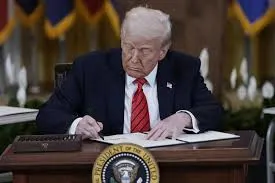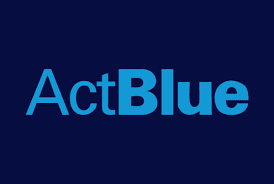In the world of U.S. politics, executive orders play a pivotal role in shaping policies, managing government functions, and addressing national concerns. Today, President Donald Trump’s executive orders continue to draw attention for their significance and potential long-term effects. Whether it’s focusing on national security, economic recovery, or healthcare reforms, these orders demonstrate the President’s approach to governance and his ability to enact swift policy changes. This article dives into the current updates regarding President Trump’s executive orders and their broader impact.
What Are Executive Orders?
Executive orders are legally binding directives issued by the President of the United States to manage operations within the federal government. While they do not require congressional approval, they have the force of law and are often used to implement existing laws or direct how federal agencies should operate. The scope and effectiveness of these orders can vary, but they are powerful tools for setting policy and guiding national priorities.
Key Executive Orders by President Trump
Under President Trump, executive orders have spanned a variety of critical areas such as immigration, national security, healthcare, and economic growth. Some of the most notable and controversial orders include the travel ban, border security measures, and tax cuts. Each of these has sparked debates, legal challenges, and discussions across the nation and globally.

1. Executive Orders on Immigration
President Trump’s executive orders on immigration have been among the most widely discussed throughout his presidency. The travel ban, for instance, aimed to restrict entry into the United States from several predominantly Muslim countries, citing national security concerns. Although the ban faced multiple legal challenges, the U.S. Supreme Court upheld it in 2018.
Moreover, President Trump signed an order in 2017 that called for the construction of a wall along the U.S.-Mexico border. This policy became a symbol of Trump’s hard stance on illegal immigration and border control. The funding for the wall was a central point of contention, particularly in Congress, but the executive order allowed for reallocation of defense funds to support its construction.
2. Economic Orders and COVID-19 Relief
In response to the economic disruptions caused by the COVID-19 pandemic, President Trump issued several executive orders to address immediate financial concerns. Among them was a directive to extend unemployment benefits, provide payroll tax relief, and push for eviction protections for renters. Additionally, Trump’s order aimed to give businesses greater flexibility in managing their tax obligations during the crisis.
The economic impact of these executive orders was substantial, especially for millions of Americans facing unemployment and financial insecurity. However, debates about the scope and effectiveness of the measures, as well as their long-term implications, have continued to arise.
3. National Security and Trade Policies
National security concerns have also led to key executive orders from President Trump. One of the most high-profile orders was the banning of certain Chinese technology companies, such as Huawei, citing risks to U.S. cybersecurity. This move was part of broader efforts to address what the administration considered unfair trade practices and security threats from foreign competitors.
Additionally, President Trump issued a series of executive orders related to international trade, including withdrawing the U.S. from the Trans-Pacific Partnership (TPP) and renegotiating the North American Free Trade Agreement (NAFTA), which was eventually replaced by the United States-Mexico-Canada Agreement (USMCA).
4. Healthcare Reform Orders
Healthcare has been a significant policy issue for the Trump administration. In 2017, he signed an executive order aimed at promoting healthcare competition and reducing the costs of prescription drugs. The order encouraged the expansion of short-term, limited-duration plans, providing an alternative to the Affordable Care Act (ACA) health insurance options.
While healthcare remains a divisive issue in American politics, President Trump’s executive orders on the subject sought to increase market competition and provide more affordable healthcare alternatives, especially for people who felt burdened by ACA regulations.
Ongoing Effects of Executive Orders
President Trump’s executive orders have had both immediate and lasting effects on the political landscape. While some orders have been challenged in court, many remain in effect and continue to influence government policy. The President’s use of executive orders has also sparked discussions on the balance of power between the executive and legislative branches of government.
For future administrations, President Trump’s approach to executive orders may set a precedent for how to address urgent national issues and bypass gridlock in Congress. However, the potential for overreach or the misuse of executive power remains a point of contention.
Conclusion
As of today, President Trump’s executive orders continue to shape the policy direction of the United States. From immigration and national security to economic relief and healthcare, these orders have had a profound impact on various aspects of American life. The legal, economic, and political consequences of these actions will likely be debated for years to come, and their effects will be felt well beyond the end of Trump’s presidency.
Understanding the scope and impact of these executive orders is critical for comprehending the broader policies of the Trump administration. As the nation moves forward, the legacy of these decisions will be a key element in evaluating the effectiveness of executive power in U.S. governance.





